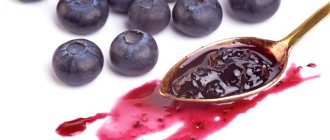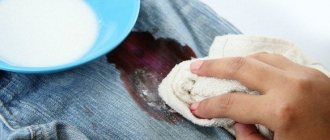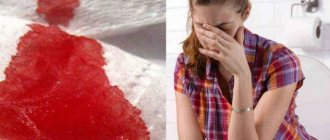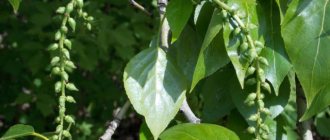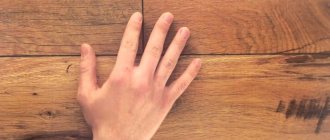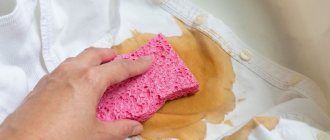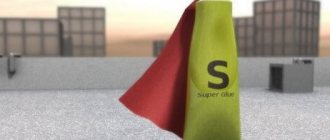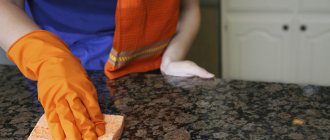Read: 412
Oh, these stains... They ruin clothes, reputation and nerves. If it’s a pity to part with your reputation and nerves, we begin the fight against stains. Even an adult experienced in handling such “bombs” can spill juice or stain clothes with berries, fruits and vegetables. What can we say about children... But it’s a pity to throw away a damaged favorite thing, and it’s not just about its cost. How to preserve clothes dear to your heart and remove juice stains? First of all, do not immediately wash the stain with soap, this will only worsen the situation. There are many methods, from effective but expensive stain removers to simple, cheap and sometimes no less effective, “grandmother’s recipes.”
Universal products for removing fresh stains
The easiest time to remove a sap stain is when it is just planted. To do this, use the following techniques.
Press a cloth moistened with cold water several times to the area of contamination. Then the fabric is generously sprinkled with table salt.
. Its crystals will absorb part of the fruit pigment from the clothing. As soon as possible, wash off the salt with cool water, and then wash the clothes with detergent. Soda, talc and starch act in the same way.
For first aid, for example, against traces of tomato juice, cold water
. But you can only use it if you have the opportunity to change clothes. You need to do this:
- the item is turned inside out and a woven napkin folded in several layers or an old towel is placed under the front side;
- A clean, light cloth is moistened generously with water and, moving from the edges to the middle, the juice-dyed fabric is rubbed. This will prevent it from being absorbed into the fibers;
- After processing, the items are allowed to dry completely.
Do not use an iron to speed up drying. A new spot will appear.
- Removes juice stains from delicate fabrics from milk and its derivatives
. The item is immersed in hot milk or whey and washed after a short soaking. These products are also used cold. But the soaking time is increased to 60 minutes. Kefir (yogurt) is suitable for combating fresh stains. It is applied locally for half an hour. - Laundry soap
gives good results when washing freshly soiled items . It is grated here, and then whipped into foam in a small amount of warm water. The stain is generously rubbed with a bar, and then the wardrobe items are dipped in a soap solution for 2 hours. - Fresh stains from white or heavily dyed linen, cotton or viscose clothing can be effectively removed with very hot water
. It is used in several ways:
- A contaminated wardrobe item is immersed in a filled basin for a few minutes and then washed in the usual way.
- Stretch the fabric with your hands and place the stain under the stream from the tap.
- The item is placed on top of an empty pan and secured with an elastic band (the result is something resembling an improvised hoop). The contamination is poured from a freshly boiled kettle until it disappears completely.
What not to use
It is not recommended to use the following products:
- solvents (acetone, white spirit and others) - spoil the structure of delicate fabrics, effectively remove dirt, but the clothes begin to look worse;
- chlorine-containing products, if they are prohibited (information is on the product label);
- boiling water (boiling is a good method, but it is contraindicated for most things, which is also indicated on the label);
- stain removers and other preparations that are not suitable for the color and type of fabric (the packaging always indicates what the product is suitable for).
Also, you should not leave the active substance on the surface of the fabric for longer than 30-40 minutes. Cherry juice dissolves quickly, and longer exposure will only spoil the material.
If clothes have pile (velor, velvet), it is not recommended to iron them after washing. Processing with aggressive agents makes the fabric more delicate and increases the risk of damage, so it is better to use a steamer rather than an iron.
Items stained with juice should be washed separately from others. And putting them in a common basket is also not advisable. Berry contamination will easily “migrate” to other clothes that happen to be nearby during the washing period.
Folk remedies against old pollution
A stain that is not immediately noticed can be removed using medications from a home medicine cabinet or household substances.
To remove cherry and other richly colored juices from light-colored and heavily dyed clothing, the following are suitable:
- Lemon acid. Nectar from high-temperature-resistant tissues is cleaned with a hot solution (1 tsp per 200 ml of water). Contaminated fine fabrics are treated with acid mixed with vodka or ethyl alcohol (1:25 and 1:10, respectively).
- Table vinegar is poured onto the traces of natural pigment and wait for it to dry. To enhance the effect, add lemon juice to the acid.
- Ammonia is diluted in water to obtain a 5% solution and applied to the stain for 5 minutes. For more successful cleansing, ammonia is combined with table salt (calculated at 25 ml per 5 g).
- Hydrogen peroxide. Moisten the problem area with an antiseptic for 10 minutes.
For dried marks, for example, from a tomato on colored materials, apply:
- Glycerin in pure form or mixed with yolk is applied to the source of the problem using a cotton pad. After a few hours, wipe the surface with a clean cloth and rinse with water at room temperature. You can also wash with glycerin, as well.
- Toothpaste (powder). Rub the cleaner into the wet stain for several minutes and leave for 3-4 hours.
- Dishwashing gel is spread over the surface requiring cleaning and allowed to dry completely.
After any treatment, clothes are rinsed in warm and then cool water, and then washed.
Cotton and linen
Removing traces of berries from clothes made from natural fabrics is a little easier. Products can be boiled, bleached if they have no pattern, and washed with chlorine-containing products. Cotton is not afraid of high temperatures, and it is hot water that best copes with traces of berry and fruit juices.
To make a T-shirt or shirt sparkle white, just soak the item in bleach diluted in water according to the instructions. Among home remedies, vinegar, vodka or alcohol, and a 3% hydrogen peroxide solution have proven themselves to be effective.
Special cases
Most specialized and home stain removers have a wide spectrum of action. But each juice has a special chemical composition, so an individual approach can be taken to contaminants.
For citrus fruits
Dried stains from orange or tangerine are removed in several stages:
- The damaged fabric is stretched by hand and held over steam for 2-3 minutes.
- Vodka is diluted with table vinegar 1:1. Use the resulting mixture to scrub the orange stain from the edges to the central part.
- The cotton pad is lightly moistened with ammonia and the final cleaning is carried out.
For pomegranate or grape stains
A fresh trace of a pomegranate or grape drink can be easily removed by alcohol and liquids containing it. You can deal with ingrained grapes like this (perhaps everything will be limited to the first step):
- Dissolve 2 g of lemon juice in 15 g of heated wine alcohol and apply the mixture to a dirty cloth for 3-5 minutes.
- The material is washed and moistened with ammonia mixed with water 1:3.
- Finally, the stain is treated with an aqueous solution of table vinegar, prepared at the rate of 1 tbsp. l. for 1 glass of water.
For apple
The apple trail requires a special approach. First, soak the contaminated item in clean warm water, and then pour a hot vinegar solution (1 tablespoon per glass) onto the apple stain.
For carrots
Carrot juice is removed from wardrobe items (colored only) by soaking for 60 minutes in a weak solution of potassium permanganate (potassium permanganate).
For beets
You can wash dried beets from clothes by following the following sequence of actions:
- Sodium hydrosulfite is applied to the dirty surface and watered with 3% hydrogen peroxide. If the specks are small, then use a pipette.
- Prepare a vinegar solution (1 part 9% vinegar to 3 parts water) and treat problem areas with a sponge or cotton swab.
Dealing with stubborn pollution - industrial products
Old stains require deeper cleaning, for which specialized products are suitable. Most of them are equally good at removing marks from any juice.
When choosing an industrial stain remover, you should pay attention to three factors:
- is it universal or suitable only for white things;
- at what temperature does it start to work;
- Is it suitable for delicate fabrics (wool, silk, synthetics).
Having selected the desired option, things get rid of fruit stains according to the instructions. Depending on the composition, the product requires from 30 s to 1 hour to eliminate the problem.
Things to remember:
- stain removers intended for white fabrics are not suitable for colored ones, since along with the stain they will “eat” the dye;
- Most cleaners are only effective in hot water, so they are not suitable for delicate materials;
- products containing chlorine will not spoil only durable white clothes made of cotton or linen.
The trace of a natural drink also dissolves laundry soap from stains. It is applied directly to the stain or used during soaking and the main wash. Before you put the bar into action, you need to consider a few points:
- Not every anti-stain soap is universal. Some are intended strictly for light-colored fabrics.
- Only soap with a special mark is suitable for children's clothing.
- Individual bars have a strong odor.
As you can see, the problem of juice stains on clothes is completely solvable. It is enough to choose the right stain remover and use it separately or in combination with other cleaning products.
Juice stains from various berries, fruits and vegetables can be removed using the same methods. White fabrics are best cleaned with bleach, while colored fabrics are best cleaned with a stain remover that does not discolor the fibers.
You can remove food stains not only with chemical cleaners, but also with improvised means. The fresher the stain, the easier it is to remove.
Quick navigation through the article
Stain removers for white clothes
If the means at hand cannot cope with old juice stains, stain removers for white clothes contain bleaching components and will definitely remove the stains.
The forums advise:
1. Bleach Bos plus Maximum
Bleach Bos plus Maximum
What the manufacturer promises:
- removes stains;
- will give a smell of freshness.
Volume: 250 grams.
Price: 60 ₽
How to use:
- soak the laundry in a basin;
- add 2 tbsp. Bos Plus spoons;
- leave to soak for 4–5 hours;
- wash clothes in the washing machine.
Recommended: do not use on colored fabrics;
Reviews:
verlar:
There are many positive reviews for this product in Review. Even enthusiastic ones. And people are not lying. BOS plus maximum really whitens, removes stubborn stains and at the same time preserves color. And it not only preserves, but also makes it brighter.
Source otzovik.com
2. Sarma Active 5 in 1
Sarma Active 5 in 1
What the manufacturer promises:
- removes stains from fruits and berries;
- will return freshness to white things;
- will get rid of old stains.
Volume: 450 grams.
Price: 88 ₽
How to use:
- add a few spoons of Sarma Active to the water;
- soak things;
- rub the stains with your hands;
- wash in a washing machine.
Recommended: do not use when washing items made of silk and wool.
Reviews:
Irishkus:
I wet the stain, applied stain remover powder, rubbed in a little and left a little of the powder on top and left for 20-30 minutes. I must say that I didn’t clean it on the first try, but the stain was really old and ingrained. After washing it, it became much paler. Then I repeated the operation and the spots disappeared.
A good product, unfortunately I don’t remember the price, I bought it a long time ago.
The product can be used both for hand washing and machine washing and it begins to act already at 30 degrees. But cannot be used for wool and silk. Suitable for colored fabrics and does not contain chlorine. Has an antibacterial effect.
Source otzovik.com
Fresh spots
In order to wash off juice, you can use several methods:
- Stretch the cloth over the pan (or other container) and pour boiling water until the stain is completely washed out;
- Rub the fabric with salt mixed with lemon juice (or citric acid solution), and rinse after half an hour. This method is best not used on white fabrics;
- Rub with a mixture of salt and soda, after half an hour, wash in soapy water, and then rinse in warm water.
You can choose any method depending on the type of fabric (for example, synthetic fibers cannot be treated with boiling water or vinegar). If possible, it is worth checking the effect of a particular product from the inside out, on an inconspicuous area of the fabric.
How to remove with household chemicals?
Household chemicals are used to combat stains. Such substances consist of several components, due to which they effectively remove any dirt from various surfaces.
Features of choice:
- People suffering from allergies should give preference to natural-based products. They are also used to care for the belongings of small children and people with hypersensitive skin.
- Products containing chlorine are only suitable for durable fabrics and surfaces with permanent staining.
- A quality stain remover should be free of phosphates.
- Most cleaning agents contain surfactants. The product is considered safe if it contains no more than 30%.
- Enzymes have good cleaning ability. In addition, they are safer to use.
- Regardless of the type of surface, it is better to give preference to liquid products. Abrasive substances leave behind scratches.
Top 3 best lineups.
Eared Nian
Stain remover with a complex of 5 enzymes. The product is available in the form of a spray, suitable for combating stubborn stains, safe for children, does not contain phosphates, chlorine and fragrances. The bottle is equipped with a convenient spray nozzle. Price – 100 rubles. Read reviews here and here.
Clean Home
Bleach-stain remover express effect. The composition is available in powder form, is safe for all types of fabrics, does not contain parabens, chlorine and phosphates. Price – 360 rubles. Read reviews here, here and here.
Paterra
Stain remover for all types of fabrics. The product is available in the form of a concentrate. The composition is universal, it can be used to clean clothes, shoes, upholstered furniture, bags, carpets and more. Price – 350 rubles. Read reviews here, here and here.
Old stains
In order to remove old juice stains, you must use one of the following methods:
- Dip a cotton swab into a solution of potassium permanganate with the addition of vinegar and wipe the stain with it until it disappears. The fabric will be stained with potassium permanganate, but it can be easily removed with hydrogen peroxide;
- Mix glycerin and raw egg white in equal parts. Apply this mixture generously to the berry stains, leave for several hours, rinse and wash the item as usual;
- Fruit juice stains can be removed with glycerin;
- A cloth with a dried stain can be stretched over a saucepan and heated in a steam bath, wiping the stain with a cotton swab dipped in lemon juice (or citric acid). After this, the place where the stain was needs to be treated with ammonia.
When using any method, the stain is erased from the edges to the center so as not to smear it on the fabric. Be sure to place napkins or an unnecessary white clean cloth on the back side so that the stain does not transfer to another part of the clothing.
Initially, it is better to use a weak concentration of aggressive substances. If the stain cannot be removed, you can make a more concentrated product and treat the fabric again.
The problem of fruit juice stains periodically occurs on our clothes. Fruit juices come in different colors because they are made from different types of berries. Thus, clarified green apple juice may not harm clothing fabric as much as black currant juice. But this or that product in any case leaves stains on clothes, which are best dealt with as soon as possible. Let's find out how to wash off juice
.
The Common Way to Get Rid of Juice Stains
This is to stretch the soiled clothes onto a small saucepan, and pour a stream of boiling water from the kettle on top directly onto the stain. This method is good if the stains are fresh. If the stains from the juice are already old, then rub them with laundry soap and leave in this state for ten minutes. After this, place the fabric in hot water and keep it soaked for about thirty minutes.
Finally, wash your clothes with regular laundry detergent. A stain remover can also help remove juice stains by soaking soiled items in it overnight. Then simply wash your clothes. The original composition for removing fruit stains is to mix the same amount of vodka and glycerin together, and then rub the stained area with this mixture. You can also use lemon juice, diluting it with denatured alcohol or vodka in a one-to-one ratio. Using ammonia can also help fight sap stains.
This method will help you wash off the juice no later than two hours after the spill. It will not be possible to wash old stains using this method, since over time they become more deeply embedded in the fabric.
Method 2. Alcohol
How to remove grape juice stains from clothes - use ammonia
How to remove grape stains? In this case, you can remove juice stains using ammonia. The grapes are afraid of him. The instructions are presented in the table:
| Illustration | Procedure |
| Step 1 Wet the stain with five percent ammonia. | |
| Step 2 Three stain with a damp cloth. | |
| Step 3 Rinse under running water and leave to dry. |
This method is the fastest and safest for your clothes. It will not harm the fabric and will leave its color just as bright.
Method 3. Boiling water
Another old “old-fashioned” method is the use of boiling water. It's great for removing fruit stains. What needs to be done?
- We place wide dishes (basin, pan) on the table.
- We stretch the cloth from which the blot needs to be removed over the dishes and begin pouring boiled water onto it. Pour until the stain disappears completely.
- Drying clothes.
Boiling water will help get rid of fruit stains
It is remarkable that you can watch the stain disappear before your eyes. You just need to be extremely careful, as you can scald your hands with boiling water or damage the fabric. The method is used only on clothes that do not fade.
Method 4. Peroxide
How to remove a tangerine stain? To do this you will need hydrogen peroxide and ammonia. Mode of application:
| Illustration | Procedure |
| Step 1 Prepare a solution by mixing 1:1 peroxide and ammonia. Add a teaspoon of the resulting mixture to half a glass of hot water. | |
| Step 2 Soak a swab or piece of fabric with the prepared solution. | |
| Step 3 Use a soaked swab to rub the area where the stain has formed. | |
| Step 4 Rinse under running cold water. |
In the same way, you can remove marks from clothes if you spilled carrot juice.
Method 5. Citric acid
Using citric acid, stains are removed from colored clothing. Lemon acid will not harm the color and gently washes stains, preserving the appearance of the fabric.
Using citric acid, you can easily wash off apple juice and also remove orange stains. Instructions with photos are presented below:
| Illustration | Procedure |
| Step 1 Fill a container with hot water and stretch the clothes on which the juice has been spilled over it. | |
| Step 2 Prepare a solution of citric acid and warm water. Place 1 tablespoon of acid in a glass of hot water and stir. | |
| Step 3 Mix the resulting solution with vodka or denatured alcohol in a 1:1 ratio. | |
| Step 4 Soak a piece of cloth with the prepared solution and begin wiping the traces of juice from your clothes. | |
| Step 5 Rinse clothes and dry. |
This method works great if you've spilled tomato juice. Citric acid copes with many other contaminants.
Method 6. Glycerin
| Illustration | Procedure |
| Step 1 Dilute glycerin and egg yolk in proportions 1:1. | |
| Step 2 Apply the prepared mixture to the clothes where the juice was spilled and leave for 2-3 hours. | |
| Step 3 We wash things in powder with our own hands. Rinse and dry. |
This method is perfect for colored fabrics. It removes stubborn old stains and maintains the original color of clothes.
Carpets and rugs
It will be possible to remove traces from the carpet if the contamination is detected in time. First, juice stains are blotted with a dry cloth so that they do not spread over the entire surface. Then prepare a solution for carpets from shampoo and water, following the instructions suggested by the manufacturer. If juice stains are difficult to remove, prepare a mixture of glycerin and vodka. The components are mixed equally, a cotton swab is moistened in the solution and passed over the stain, and washed off after 10 minutes.
Another interesting way to clean carpets is using carbonated mineral water. It prevents pigments from becoming embedded in the fibers. But the method is good for early detection of the stain.
After the procedure, it is important to dry the carpet properly. It is recommended to place a towel on the wet area and press it down with a heavy one. Once the moisture is absorbed, the towel is replaced. By analogy, paper napkins are used.
How to remove apple and juice stains from clothes
Apples are among the top three healthiest fruits, second only to kiwi and grapes. That's why it's so beneficial to eat at least one apple a day. Various delicacies prepared from this fruit are no less beneficial. They are the ones who stain our clothes most often. Spilled apple juice on a kitchen tablecloth, a piece of apple pie that fell on light gray trousers, a spoon of applesauce that a one-year-old baby couldn’t hold and dropped onto a snow-white skirt... How much trouble do such stains bring! It's so difficult to get them out! Probably, young mothers suffer the most. Little children love applesauce, and after such a meal, as a rule, not only their face is dirty, but also their clothes.
Why is it so difficult to remove apple stains?
There is an opinion that apples acquire a “rusty” color due to the fact that iron in them oxidizes. This is wrong. Apples do have a lot of iron, but it is not what causes the darkening of the flesh. The fact is that this fruit contains special enzymes that oxidize polyphenols, also included in their composition. A protective brown film forms on the surface of a cut or damaged apple. This process is needed to protect the fetus from microorganisms and various insects. Therefore, both puree and juice from apples quickly darken, and when they get on the fabric, they leave dark spots. Water and ascorbic acid can “stop” this process, so every housewife knows that in order to prevent peeled and cut apples from darkening, they are placed in water or sprinkled with lemon juice. We, of course, will not delve further into biology, but will begin to study ways to remove stains based on the properties of the apple.
By the way, bananas and potatoes have similar properties, so the nature of stains from these products is the same.
Unlike stains of other origins, clothes stained by apples are first soaked in warm water without adding soap or powder. The fact is that using conventional detergents at the beginning of washing can “fix” the stains even more.
How to remove stains from adult and children's clothing
Apple stains are removed using both professional and folk remedies. It is worth noting that it is much easier to remove fresh stains than old ones. If the stain is already, as they say, years old, then your chances of getting rid of it are close to zero.
How to remove fresh apple stains
You'll have a much better chance of removing stains if you act immediately after they appear. You can get rid of them in the following ways:
If the stains are not completely gone, then their remnants can be removed using a cotton swab dipped in vinegar. Places with dirt are wiped until they disappear completely. Use the same method to get rid of small spots.
You can also use a slice of lemon. Rub the stain with it, as in the previous method.
Don't forget that vinegar can bleach some fabrics and leave light stains. If in doubt, try it on an inconspicuous area or choose another product.
Cleaning old stains using folk remedies
There are a large number of stain removers in the form of powders, sprays, gels, liquid formulations, and soaps that can effectively deal with stains of any origin. But what if there is an allergy sufferer or small children in the house? The use of “all kinds of chemicals” in such cases is not only undesirable, but often unacceptable. Let's consider old “folk” remedies that have been proven by more than one generation of women.
Apple stains are removed using citric acid, vinegar, ammonia, vodka, ethyl alcohol and glycerin. Let's consider all the methods using these tools:
Instead of citric acid, you can use oxalic acid. You need to do the following:
If the product is made of delicate or woolen fabric, or the citric acid method did not work, then you can use ammonia. How to remove stains:
. Glycerin, which can be bought at any pharmacy, is diluted with vodka or alcohol in a 1:1 ratio. Next steps:
Boiling will also help remove old apple stains. This method is more suitable for cotton fabrics. Fortunately, most children's clothes are made of cotton, so you can safely buy bibs, bodysuits and T-shirts. Boiling is also safe for white fabrics, although do not forget that frequent use of this method can damage the product. You need to “cook” the soiled items for about 10 minutes, stirring with a wooden spatula. Leave to cool and then wash with soap or powder.
Also, clothes stained by apples can be soaked in a solution of citric or oxalic acid overnight and then washed. You will need 2 g of acid per glass of water.
If none of the above methods work, then you will have to either put up with the stains or turn to professional help.
Ammonia solution
Ammonia is an inexpensive product sold in any pharmacy. It can be used to deal with various stains. The instructions for use are very simple:
- Mix 10% ammonia and water in equal proportions.
- Treat contaminated clothing with the solution.
- Wait 10-15 minutes.
- Then wash things with soap.
